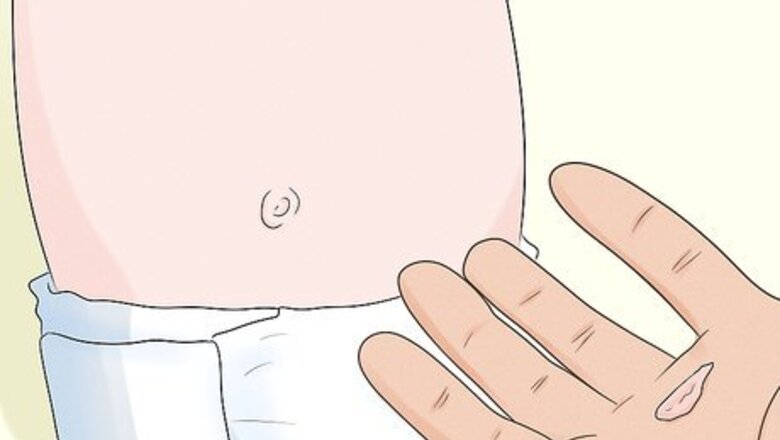
views
Showering Safely
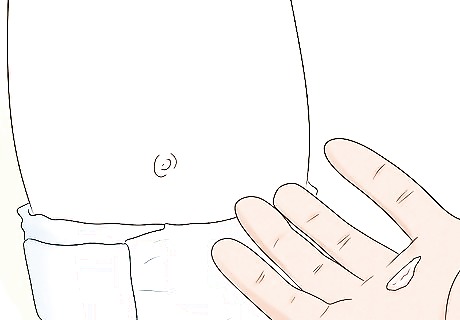
Wait until your baby’s umbilical cord stump drops off to try the shower. Until your baby’s umbilical cord dries up and falls off, it’s important to keep the area dry. To avoid infections and help their belly button heal properly, stick to sponge baths for your baby and skip the shower. The umbilical cord stump typically falls off when the baby is around 1-2 weeks old. If you have any concerns about your baby’s umbilical cord or the way their belly button is healing, give your pediatrician a call. They can also tell you for sure if it’s safe to shower with your little one.
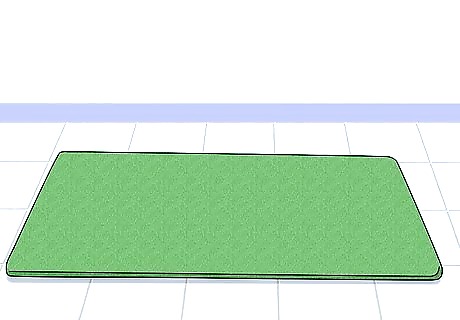
Put down a slip-proof floor mat if your shower doesn’t have one. Showers can get super slippery, which can be a hazard if you’re holding a baby. Before you try co-showering, get a nice grippy mat that sticks firmly to the floor of your shower. Test the mat to make sure it doesn’t slip around easily on the shower floor. For extra safety, set a slip-proof shower mat outside the shower, too. You don’t want to lose your footing stepping out of the bath with a wet, slippery baby!
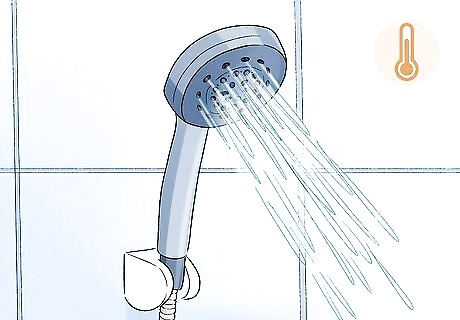
Keep the water warm, not hot, to avoid scalding your baby. Even if you enjoy a steaming hot shower, hot water is too harsh for your baby’s delicate skin. Try to keep the water no warmer than around 100 °F (38 °C). It should feel comfortably warm, not hot, on your hand and wrist. Check your water heater to make sure it’s set below 120 °F (49 °C). If the water gets any hotter than that, it could scald your baby. If you’re not sure whether the water is a safe temperature, buy a baby bath thermometer online or from a store that sells baby supplies. You can use the thermometer to easily check the exact water temperature. Make sure the water’s not too cold, either. Keep your baby in comfortably warm water at all times so they don’t get chilly in the shower.
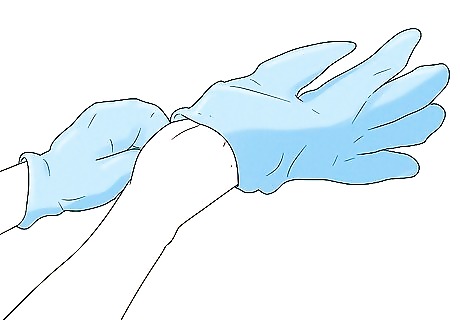
Slip on some shower gloves to improve your grip. Shower gloves are great for gently cleansing your skin and your baby’s. They also make it much easier to hold onto a sudsy, wet baby or toddler in the shower. You can buy shower gloves at most stores that sell bath and body supplies. You can also check the baby section of your favorite store for extra soft baby bath gloves.

Step into the shower before grabbing your baby. While this is even more important when you’re climbing into a tub, it’s also a good idea to step into the shower stall before you pick up your baby. That way, you’re less likely to slip with your baby in your arms. Set your baby down in a baby seat or rocker, then reach down to pick them up once you’re safely in the shower. If you have a partner, co-parent, or another adult there with you, you could also ask them to hand you the baby once you’re in the shower.
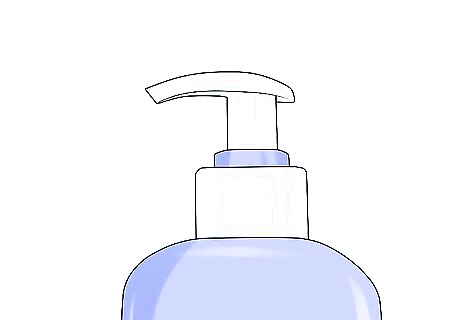
Use shower products with pump dispensers so you don’t need both hands. When you’re bathing or showering with your baby, it’s a good idea to keep at least one hand on them at all times. This means you’ll want to avoid the struggle of trying to hold a baby and squeeze shampoo out of a bottle at the same time. Go for products with pumps on them so that you can easily get what you need one-handed. If your favorite products don’t come in pump dispensers, buy some empty pump dispensers online or at a store that sells bath and body supplies. Transfer the product into the new container before your first shower with your baby. You can also buy completely touchless dispensers with motion detectors.
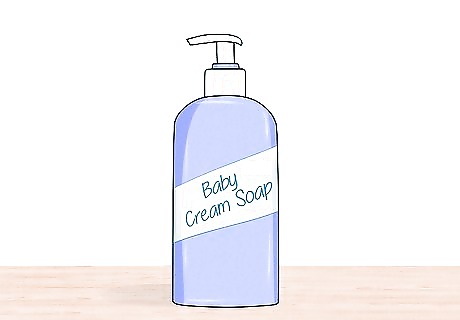
Wash your baby with gentle, baby-safe products. Adult shampoos, conditioners, and body washes may be too harsh for an infant’s sensitive skin, hair, and eyes. Bring your baby’s bath products into the shower with you and use them to gently cleanse your baby. If you want, you can even use your little one’s shampoo on yourself! It won’t hurt your hair, but it may not cleanse and condition it as thoroughly as your usual products. If your baby’s skin tends to get dried out after a bath or shower, have some mild, fragrance-free baby lotion on hand. Gently rub it into their skin after you get out of the shower.
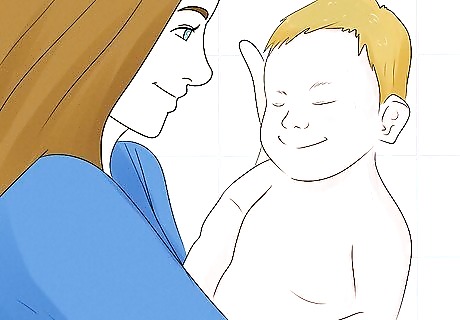
Clean your baby with one hand while holding them securely. When you’re ready to wash your baby, hold them securely with one arm and pump a little baby shampoo or body wash onto a washcloth or bath glove with your other hand. Use that hand to gently lather up your baby’s hair and skin. Wash their diaper area last. Then, rinse them under the shower, taking care not to get water or soap in their eyes. One secure and easy way to hold your baby, especially if they’re still really little and don’t have much head control, is with a “football hold.” Rest the baby’s head on your hand and their back on your forearm, and pin their buttocks gently but firmly against your hip with your elbow. When you’re rinsing your baby’s hair, shield their eyes with your hand to keep water and suds out. Similarly, you can hold the baby against your body with one hand while you wash yourself with the other.

Set your baby down outside the shower before you step out. To avoid any possible accidents, reverse the process you used to get into the shower. Wrap your little one in a dry towel and set them down in a seat or swing outside the shower. Then, you can step out of the shower, pick up your baby, and dry them off. Alternatively, hand the baby to another adult before you step out. Ask them to be ready with a towel to wrap around your baby.

Never leave the baby unattended in the shower. Even if your baby or toddler is old enough to stand or walk on their own, it’s very important to be with them at all times when they’re in the shower. If you have to step out, even for a few seconds, take the baby with you. Babies and toddlers can easily slip and hurt themselves in a shower, even if you leave them sitting in a sling or baby tub. They can also drown very quickly—in as little as 20 seconds—in even a few centimeters of water.
Making Shower Time Comfortable
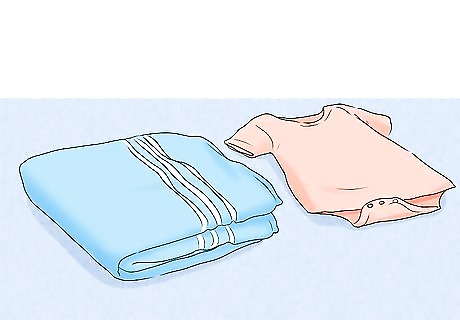
Have fresh, dry towels and clothes ready to go when you get out. Before stepping into the shower with your little one, take a few minutes to prepare. Get together anything you’ll be using in the shower as well as all the stuff you’ll need when you get out—including clean towels and a change of clothes for both of you, and a fresh diaper for your baby. Have a dry washcloth or hand towel within reach during the shower so you can wipe your baby’s face dry if they’re upset by the water. You can also use the towel to quickly wipe away any suds that get in their eyes.
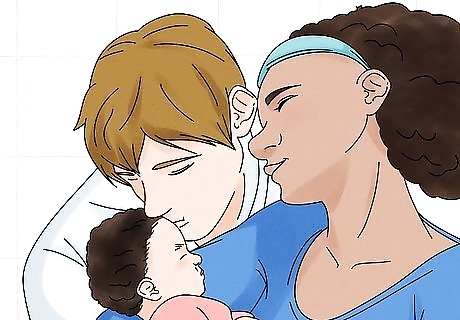
Ask your partner or co-parent to join you in the shower if possible. A family shower can be a fun way for you and your partner to bond with your baby together. It will also make it a lot easier for you to wash both yourself and your baby! If you live with a partner or co-parent, ask them to hop in the shower with you and the baby. This way, you can take turns passing the baby back and forth while you wash yourselves. Your partner can also quickly take the baby out of the shower and let you finish up if the baby gets upset.
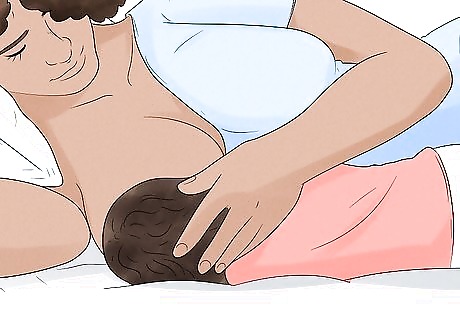
Pick a time when you and your baby are both relaxed. If you’re frazzled and hurrying to get a million things done, or if your baby is tired and screaming their head off, it’s not a great time to attempt your first co-shower. Wait until you and your baby are both calm and relatively well-rested, and pick a time when you won’t feel rushed during your shower. Some babies may enjoy the shower and find it calming or fun, but you won’t know how they’ll react until you try it! If they like it, you can try showering with your baby when they’re cranky or tired to soothe them. Try incorporating a shower into your nightly bedtime routine. For instance, each night you might give your baby a snack, then shower together, then read a story. Over time, that consistency will help make bedtime easier.
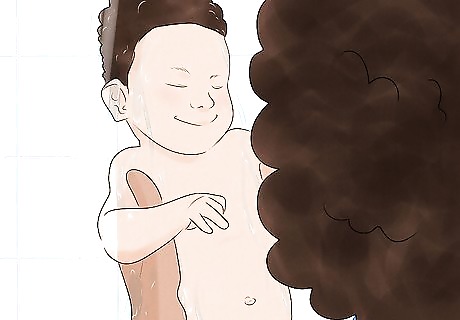
Ease your baby into the shower slowly to avoid startling them. The first time you shower with your baby, they might find the water startling. Ease into the water gently and hold your baby so that the spray from the shower doesn’t get into their face or on their hair. If your baby is really upset and keeps crying, don’t try to force it. You can always try showering with them another time.
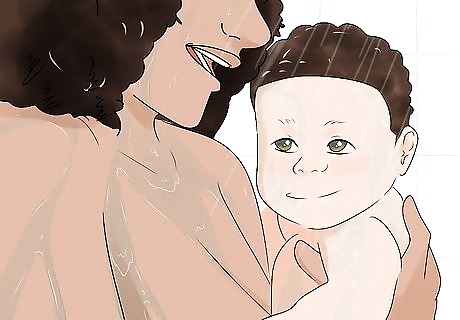
Keep showers with your baby brief until they get used to it. Even if your baby doesn’t mind the water, don’t try to do an epic hour-long shower with them. Stick to holding them in the shower for just a few minutes at first, and step out or hand them to another adult if they start to get upset. This will help prevent the baby from associating the shower with feeling scared or stressed out. If your baby is having fun, there’s no need to rush! Take advantage of some relaxing bonding time with your baby.
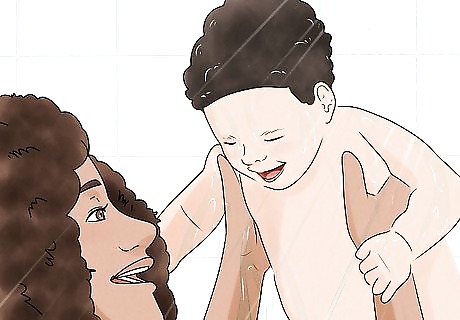
Play and sing with your baby in the shower. Do your best to keep bath time enjoyable and calming for you and your baby. If you’re showering with an older baby or a toddler, you can let them sit or stand on the floor of the shower. Give them a few bath toys to keep them entertained while you wash up.You can also hold your baby, sing to them, and encourage them to play with the water. This will help your little one form positive associations with being in the shower with you. For example, you could stand outside the stream of water and encourage your baby to dip their hand in. Laugh and cheer them on when they touch the water. Talk to your baby in a soothing or happy voice the whole time you’re in the shower. They’ll pick up on your mood and feel more relaxed.



















Comments
0 comment